Domain Eukarya Rank Species | Genus Aspergillus Higher classification Aspergillus | |
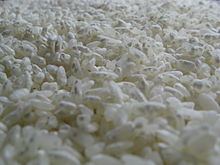 | ||
Similar Aspergillus niger, Rhizopus, Rhizopus oryzae, Aspergillus flavus, Aspergillus nidulans | ||
Aspergillus oryzae
Aspergillus oryzae, known in English as koji (Japanese: 麹, Hepburn: kōji), is a filamentous fungus (a mold) used in Chinese and other East Asian cuisines to ferment soybeans for making soy sauce and fermented bean paste, and also to saccharify rice, other grains, and potatoes in the making of alcoholic beverages such as huangjiu, sake, makgeolli, and shōchū. The domestication of A. oryzae occurred at least 2000 years ago. A. oryzae is also used for the production of rice vinegars.
Contents
- Aspergillus oryzae
- Time lapse video of aspergillus oryzae koji growing on rice
- History of koji
- Properties desirable in sake brewing and testing
- Varieties used for shch making
- Genome
- Use in biotechnology
- In fiction
- References
Dr. Eiji Ichishima of Tohoku University called the kōji fungus a "national fungus" (kokkin) in the journal of the Brewing Society of Japan, because of its importance not only for making the koji for sake brewing, but also for making the koji for miso, soy sauce, and a range of other traditional Japanese foods. His proposal was approved at the society's annual meeting in 2006.
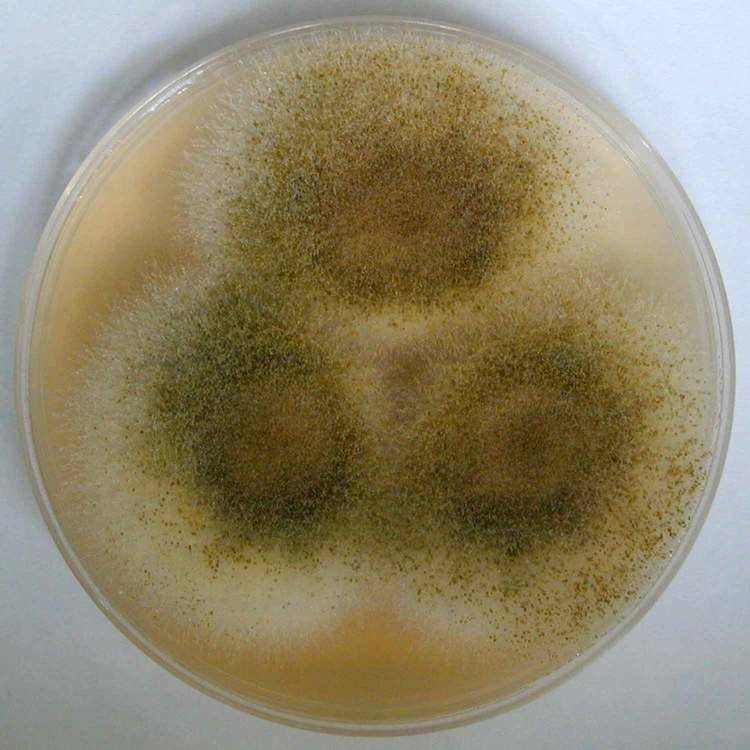
"Red kōji-kin" is a separate species, Monascus purpureus.
Time lapse video of aspergillus oryzae koji growing on rice
History of koji
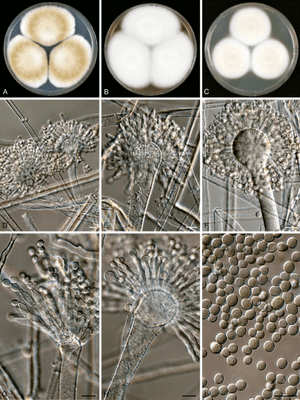
300 BCE – A. oryzae is first mentioned in the Zhouli (Rites of the Zhou dynasty) in China. Its development is a milestone in Chinese food technology, for it provides the conceptual framework for three major fermented soy foods: soy sauce, jiang / miso, and douchi, not to mention grain-based wines (including Japanese sake) and li (the Chinese forerunner of Japanese amazake).
Properties desirable in sake brewing and testing
These properties of A. oryzae strains are important in rice saccharification for sake brewing:
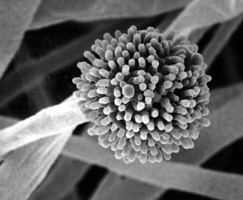
Varieties used for shōchū making
Three varieties of kōji mold are used for making shōchū, each with distinct characteristics.
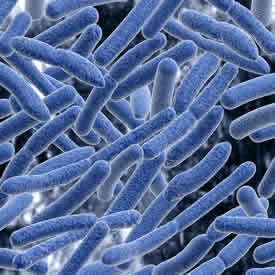
Genome
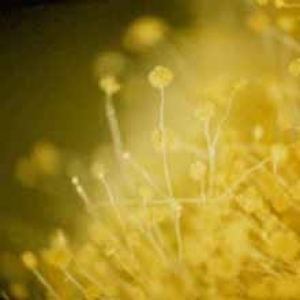
Initially kept secret, the A. oryzae genome was released by a consortium of Japanese biotechnology companies in late 2005. The eight chromosomes together comprise 37 million base pairs and 12 thousand predicted genes. The genome of A. oryzae is thus one-third larger than that of two related Aspergillus species, the genetics model organism A. nidulans and the potentially dangerous A. fumigatus. Many of the extra genes present in A. oryzae are predicted to be involved in secondary metabolism. The sequenced strain isolated in 1950 is called RIB40 or ATCC 42149; its morphology, growth, and enzyme production are typical of strains used for sake brewing.
Use in biotechnology
Resveratrol can be produced from its glucoside piceid through the process of fermentation by A. oryzae.
In fiction
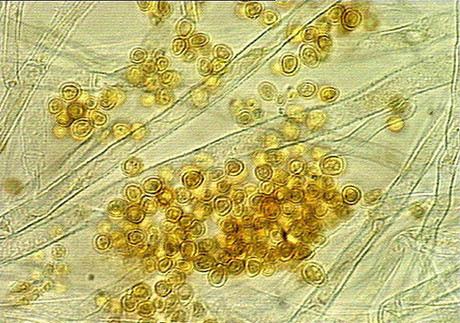
A. oryzae is a supporting character (of sorts) in the manga series Moyasimon: Tales of Agriculture and its anime adaptation.
